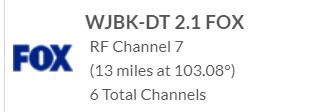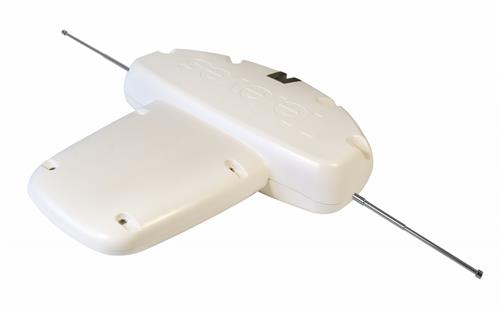Does size really matter? That may be the topic for a far less family-friendly blog. In this case I’m talking about antenna size. Take a look at the image at the top of this article. This Televes DiNova is a little bigger than a large laptop computer. You might tell yourself that there is no way it can perform as well as a large antenna like our HD8200XL which is about 11 feet long. You’d be right… and you’d also be wrong. Let’s take a look.
Getting to the details
First of all the larger HD8200XL is really large because it is designed to pick up channels 2 through 6 which the smaller antenna will not do. These lower frequencies need a much larger antenna to capture them effectively, that’s just the way broadcasting works. Since very few people actually need channels 2 through 6, it makes sense to eliminate that capability from a smaller antenna.
Many smaller antennas don’t work at all in the VHF range, meaning you won’t get broadcast channels 2-13. You’ll have to decide for yourself if you need those channels. Keep in mind that the channel number you see probably isn’t the real broadcast channel. You’ll need to go to a source like antennaweb.org to see those results. When you search for channels in your local area, you’ll see something like this in the list:

Here you’ll see that our local Fox station in Detroit calls itself channel 2 but actually broadcasts on channel 7. In every case you’re going to want to look at the part that says “RF Channel” when you are deciding if you need a VHF antenna. If that number is 7-13, you can make do with a VHF-High antenna like the Dinova Boss, but if it says 2-6 you’ll need an antenna that gets VHF-Low like the 8200XL. Just know that those antennas will be much larger.
How can smaller antennas perform like larger ones?
Smaller antennas like these rely on low-noise amplifiers to give them similar gain to larger antennas. However, a lot of time that’s just a gimmick because gain isn’t the most important thing with digital antennas. With digital TV, once you have enough signal to overcome the noise surrounding it, you’re all set. Any more signal than that is just icing on the cake.
And actually, that’s the whole reason that smaller antennas can work just as well as larger ones. Sometimes a small antenna is all you need because a digital signal will give a strong, clear picture with a much weaker signal than an older analog one. Adding a little ampification makes sure that the signal isn’t overcome by loss when it travels down the cable. I’ve seen surprising results with compact antennas precisely because they can pull in enough of the signal to do very well. Since some homeowners’ associations don’t let you put a large antenna on the roof, a small one that works “well enough” is the perfect answer.
Choosing the right over-the-air antenna
There are a lot of resources to help you choose the right antenna. Antennaweb.org is a great resource for DIYers, and Winegard’s app for your phone gives you an augmented reality view of where the antennas are. There’s a better way, if you’re still confused. Call the experts at Solid Signal. You’ll get a real certified antenna tech on the phone. They’ll be able to take everything into account — your location, whether or not you can get up on the roof, all that stuff — and they’ll recommend the best antenna for you based on our thousands of listings. The whole service is free! Just call us at 888-233-7563 during East Coast business hours. If it’s after hours, fill out the form below. We’ll get back to you, usually within one business day.





